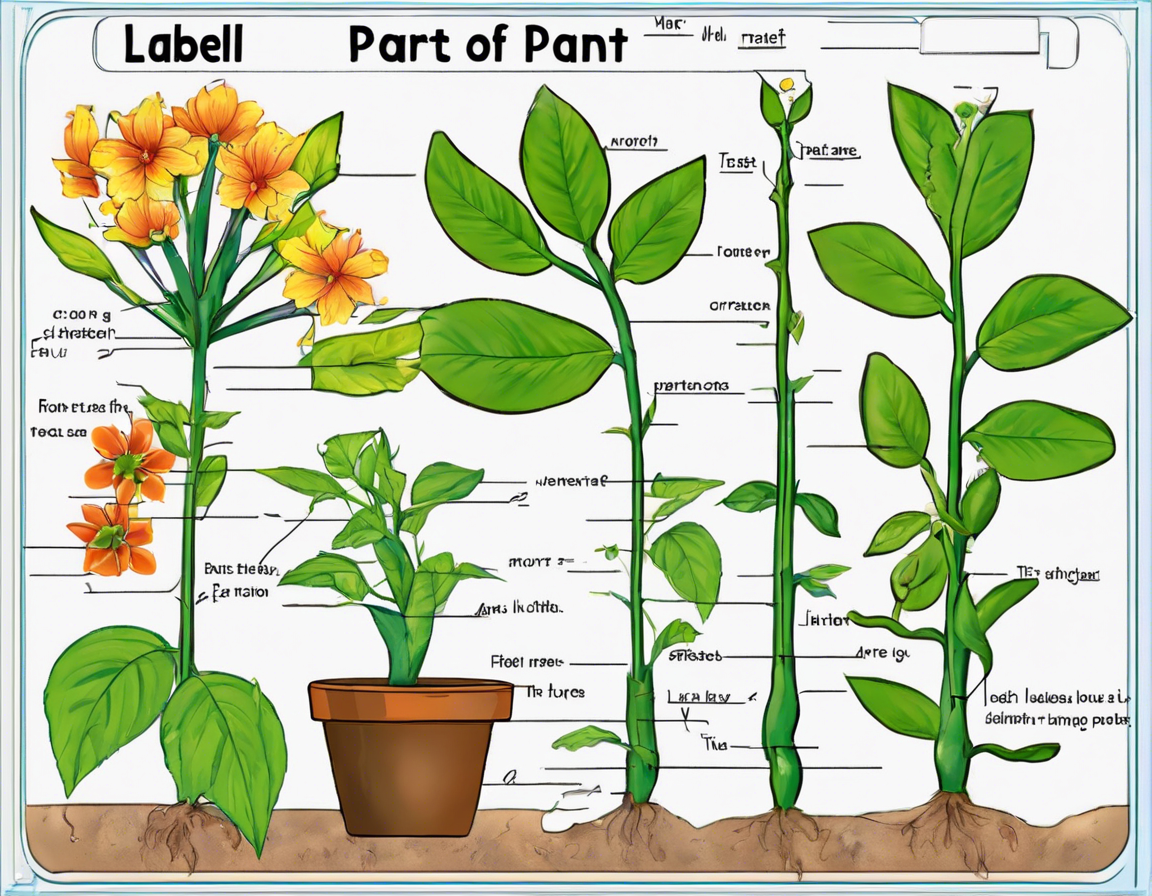
Identifying the Parts of a Plant: A Guide.
Plants are a vital part of our ecosystem, providing us with oxygen, food, and numerous other resources. Understanding the different parts of a plant is not only beneficial for botanists and horticulturists but also for anyone interested in gardening, agriculture, or simply appreciating nature. In this comprehensive guide, we will explore the various components of a plant and their functions, from roots to leaves and everything in between.
Roots
The roots of a plant anchor it in the soil and absorb water and nutrients from the ground. There are two main types of roots:
1. Taproot: A single, thick root that grows deep into the soil.
2. Fibrous roots: Numerous thin roots that spread out close to the surface.
Functions of Roots:
- Anchorage: Roots provide stability and support to the plant.
- Absorption: They absorb water and minerals essential for the plant’s growth.
- Storage: Roots store food and nutrients for the plant to use when needed.
Stem
The stem is the main structural axis of a plant, connecting the roots to the leaves. It provides support for the plant and serves as a highway for the transportation of water, minerals, and food throughout the plant.
Parts of a Stem:
- Node: The point on the stem where leaves, branches, or flowers are attached.
- Internode: The region between two nodes.
- Bud: A compact, undeveloped shoot.
- Bark: The outer protective covering of the stem.
Functions of the Stem:
- Support: The stem holds up the plant and keeps it upright.
- Transport: It transports water and nutrients from the roots to the leaves and vice versa.
- Storage: Some stems store water and food for the plant.
Leaves
Leaves are the primary organs of photosynthesis in plants. They capture sunlight and convert it into energy through the process of photosynthesis.
Parts of a Leaf:
- Blade: The broad, flat part of the leaf.
- Veins: Vascular tissues that transport water and nutrients.
- Petiole: The stalk that attaches the leaf to the stem.
Functions of Leaves:
- Photosynthesis: Leaves produce food for the plant through photosynthesis.
- Transpiration: They help in the process of transpiration, where excess water is released through tiny pores called stomata.
- Gas Exchange: Leaves exchange gases with the atmosphere, taking in carbon dioxide and releasing oxygen.
Flowers
Flowers are the reproductive organs of flowering plants. They attract pollinators like bees, butterflies, and birds and produce seeds for the next generation of plants.
Parts of a Flower:
- Petal: The colorful, often scented part of the flower that attracts pollinators.
- Stamen: The male reproductive organ that produces pollen.
- Pistil: The female reproductive organ that contains the ovary.
Functions of Flowers:
- Reproduction: Flowers facilitate the process of pollination and fertilization.
- Seed Production: After fertilization, flowers develop into fruits containing seeds.
- Attraction: The bright colors and fragrances of flowers attract pollinators.
Fruits
Fruits are the mature ovary of a flowering plant. They protect the seeds and aid in their dispersal.
Types of Fruits:
- Simple Fruits: Develop from a single ovary.
- Aggregate Fruits: Form from multiple ovaries in a single flower.
- Multiple Fruits: Grow from the ovaries of multiple flowers.
Functions of Fruits:
- Seed Dispersal: Fruits help in the dispersal of seeds through various means like animals, wind, or water.
- Protection: They protect the seeds from environmental stresses.
- Nutrition: Fruits provide nutrition not only for humans but also for animals that consume them.
Frequently Asked Questions (FAQs)
1. Can a plant survive without roots?
No, roots are essential for a plant’s survival as they anchor the plant in the soil, absorb water and nutrients, and store food.
2. How do plants transport water from roots to leaves?
Plants use a system of specialized tissues called xylem to transport water and minerals from the roots to the leaves through capillary action.
3. Why are leaves green?
Leaves appear green due to the presence of chlorophyll, a pigment that absorbs sunlight and is essential for photosynthesis.
4. Do all flowers produce fruits?
No, only fertilized flowers produce fruits. Unfertilized flowers may wither and fall off without producing fruits.
5. What is the purpose of thorns on some plants?
Thorns are modified stems or branches that help protect plants from herbivores and provide support for climbing plants.
6. How do plants reproduce without seeds?
Some plants, like ferns and mosses, reproduce through spores instead of seeds.
7. Can all parts of a plant be edible?
While certain parts like fruits, leaves, and roots are commonly edible, not all parts of a plant are safe for consumption as some may be toxic.
8. Why do some plants have colorful leaves?
Colorful leaves may serve various purposes like attracting pollinators, deterring herbivores, or signaling stress or nutrient deficiencies.
9. How do plants adapt to different environments?
Plants adapt to different environments through mechanisms like developing deep roots for water absorption in arid regions or broad leaves for efficient sunlight capture in shady areas.
10. What are parasitic plants?
Parasitic plants are plants that obtain nutrients from other host plants, often at the expense of the host’s health. Examples include mistletoe and dodder.
Understanding the various parts of a plant and their functions is crucial for appreciating the complexity and beauty of the plant kingdom. Whether you’re a gardener, a student, or simply a nature enthusiast, delving into the inner workings of plants can deepen your connection with the natural world.


